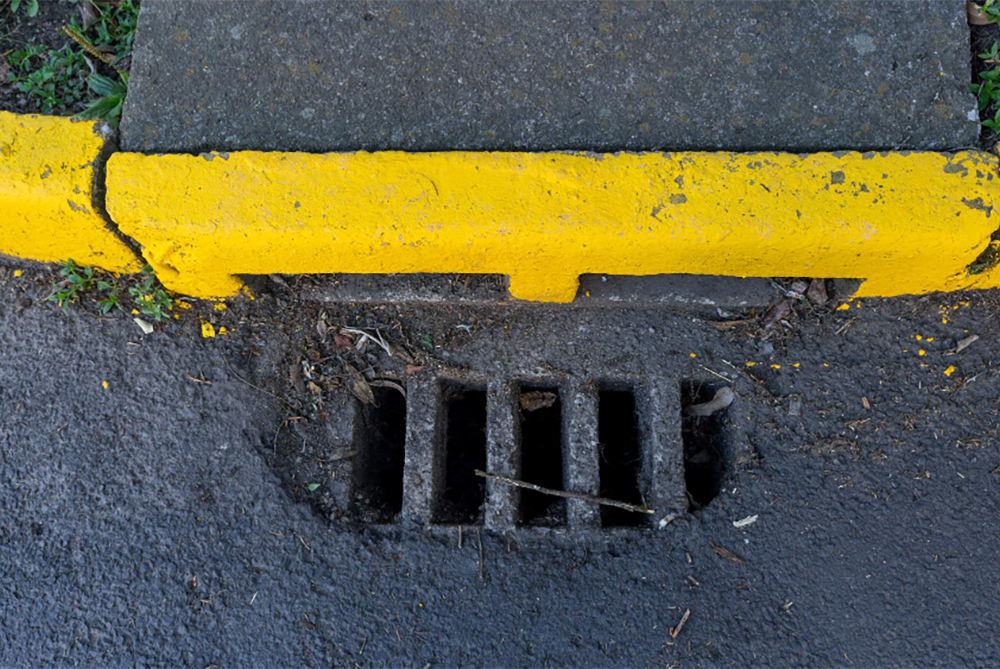
Investing in new pavement is a significant step toward improving your property's functionality and curb appeal. Whether it's a new driveway for your home or a parking lot for your business, you expect it to last for years. However, one of the most overlooked yet crucial elements that determines the longevity of your pavement is proper drainage. Without it, even the highest quality paving job can fail prematurely.
This post will explain why effective water management is non-negotiable for any paving project. We'll cover the destructive effects of water on asphalt and concrete surfaces and explore the different drainage solutions that protect your investment. Understanding these principles is essential for any property owner, especially when considering new paving in Palm Coast, FL, where heavy rainfall is common.
Water is often called the universal solvent, and for good reason. When it comes to pavement, it is a relentless enemy that works in several ways to cause damage.
The strength and durability of any paved surface depend on the stability of its foundation, which typically consists of a subgrade (the native soil) and a base layer (compacted aggregate like crushed stone). When water seeps into these layers, it saturates the soil and stone, reducing their strength and load-bearing capacity.
Think of the foundation as the legs of a table. If the legs become weak and wobbly, the tabletop will crack and collapse under pressure. Similarly, a water-logged foundation can no longer support the weight of the pavement and the traffic on it. This leads to structural failures like cracks, potholes, and rutting.
Flowing water has immense erosive power. Uncontrolled runoff can wash away the soil and aggregate from the edges and underneath the pavement. This process, known as undermining, creates voids beneath the surface. Without a solid foundation to rest on, the pavement will eventually sag, crack, and collapse into these empty spaces. This is especially problematic on sloped areas or at the edges of a parking lot or driveway where water tends to accumulate and flow with more force.
While Florida's climate is mild, the principle of water expansion is universally destructive. In regions with colder temperatures, water that penetrates cracks in the pavement freezes and expands, widening the cracks. When the ice thaws, more water enters the enlarged crack, and the cycle repeats. This freeze-thaw cycle is a primary cause of pavement deterioration in colder climates and illustrates how water infiltration can mechanically break apart pavement over time. Even without freezing, constant water presence in cracks accelerates their growth.
How can you tell if your pavement is suffering from drainage issues? Look for these common warning signs:
Ignoring these signs will only lead to more extensive and costly repairs down the road. Addressing drainage issues is the most effective way to prevent them.
Fortunately, professional paving contractors have several methods to manage water and protect your pavement. The right solution depends on your property's specific layout, soil conditions, and local climate.
The most fundamental drainage solution is to build a slope, or "grade," into the pavement itself. A properly graded surface directs water to flow away from buildings and off the pavement into designated drainage areas. The standard recommendation is a minimum slope of 2%, which means the surface drops about a quarter-inch for every foot of horizontal distance. This might not be visible to the naked eye, but it's enough to ensure water doesn't stand still.
For larger projects like parking lots, a skilled contractor will design a precise grading plan that directs water toward drains or the lot's perimeter. This is a critical first step for any quality paving in Palm Coast, FL.
In large commercial parking lots or areas that handle significant water runoff, catch basins are essential. These are concrete boxes with a grate on top that are installed at low points in the pavement. They "catch" surface water and channel it into an underground network of pipes, known as a storm drain system. This system safely moves the water away from the pavement, often to a municipal sewer system or a retention pond.
A French drain is a trench filled with gravel or rock that contains a perforated pipe. It's designed to collect and redirect subsurface water away from the pavement's foundation. This is an excellent solution for areas with high groundwater levels or where soil doesn't drain well. By capturing water before it can saturate the base layer, a French drain helps keep the pavement's foundation strong and dry.
An increasingly popular and eco-friendly option is permeable pavement. Unlike traditional asphalt or concrete, permeable surfaces are porous, allowing water to pass directly through them into a specially designed stone reservoir below. This system mimics natural ground by letting rainwater soak into the soil, which reduces runoff, filters pollutants, and recharges groundwater. While not suitable for all applications, permeable pavers or porous asphalt can be an excellent choice for parking stalls, walkways, and low-traffic driveways.
As you can see, proper drainage is not an optional add-on; it is an integral part of a durable, long-lasting pavement system. Failing to plan for water management is a recipe for disaster, leading to a cycle of expensive repairs and a shortened lifespan for your new surface.
When planning your next project, make sure to partner with a contractor who understands the critical role of drainage. An experienced paving company will assess your property, analyze the potential for water issues, and incorporate the right drainage solutions into the design from the very beginning.
If you're looking for expert paving in Palm Coast, FL, the team at Florida Sealcoating has the knowledge and experience to get the job done right. We understand the unique challenges of our local climate and design paving systems built to last. Contact us today for a free estimate and let us help you protect your investment.